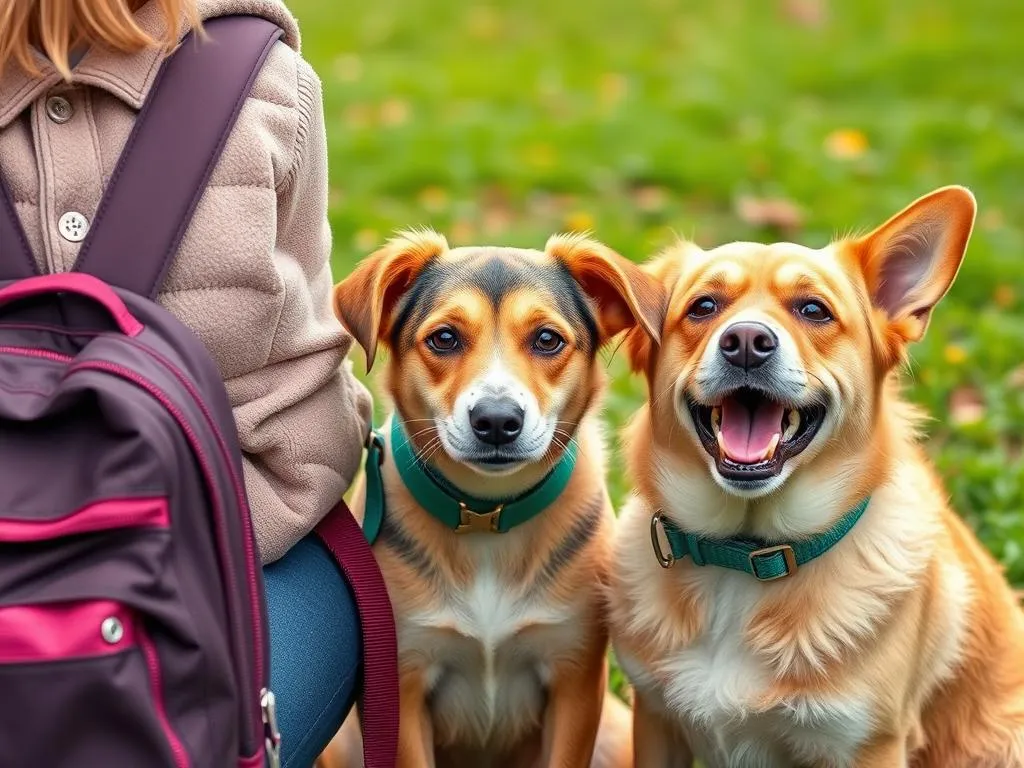
Introduction
As the leaves begin to change and the days grow shorter, parents across the country start preparing for the back-to-school season. While this time of year often brings excitement and new beginnings for children, it can pose challenges for our four-legged family members. Preparing dogs for back to school season is essential, as the shift in routine can significantly impact their emotional and physical well-being. In this article, we will explore how to help your dog transition smoothly into the new school year, ensuring that they remain happy and healthy.
Understanding the Impact of Back to School on Dogs
Changes in Routine
The back-to-school season brings about significant changes in daily activities for families. With children heading back to classrooms, mornings become busier, and afternoons may be filled with after-school activities. This shift can disrupt the consistent routine that many dogs thrive on. Dogs are creatures of habit, and alterations to their daily schedule, such as longer periods of solitude, can lead to confusion and stress.
Emotional and Behavioral Reactions
It’s common for dogs to exhibit various emotional and behavioral reactions when their routines change. Some may experience anxiety or boredom, leading to unwanted behaviors like excessive barking or destructive chewing. Recognizing the signs of stress in your dog is crucial. Look for indicators such as pacing, excessive licking, or changes in appetite. Being aware of these behaviors can help you intervene early and provide the support your dog needs.
Preparing Your Dog for the Transition
Gradual Adjustment to New Routines
One of the best ways to ease your dog into the new back-to-school routine is through gradual adjustment. Begin a few weeks before school starts by slowly shifting your dog’s daily schedule. For example, if your children typically leave at 8 AM, start getting your dog used to being alone for short periods during that time. This gentle transition will help your dog adapt to longer alone times when school begins.
Incorporate training sessions during this adjustment period. Teach commands that encourage independence, such as “stay” or “go to your place.” This training can help your dog feel more secure when they are left alone.
Creating a Comfortable Space
Creating a comfortable and safe area for your dog is essential when preparing for the back-to-school season. Designate a cozy spot in your home where your dog feels secure. This could be a crate or a specific room with their bed, favorite toys, and a blanket. Including items that smell like you or your children can provide comfort and reduce anxiety when they are alone.
Engaging Activities for Dogs
Physical Exercise
Daily physical exercise is vital for maintaining your dog’s mental and emotional health, especially during periods of transition. Regular walks, playtime in the backyard, or visits to a local dog park can help alleviate anxiety and boredom. Consider setting a daily routine for walks, ensuring that your dog gets the exercise they need to stay calm and happy.
Mental Stimulation
In addition to physical exercise, providing mental stimulation is equally important. Interactive toys and puzzles can keep your dog engaged while you’re busy. These toys challenge your dog’s brain and can be a wonderful distraction during the day. Additionally, incorporating training and obedience exercises can serve as a mental workout, helping your dog feel fulfilled even when they are alone.
Establishing a Back-to-School Routine
Morning Routine
Incorporating dog care into your busy morning routine is essential to ensure your dog feels loved and attended to before you leave. Start your day by spending quality time with your dog. This could be as simple as a short walk or some playtime. Creating a consistent morning schedule can help your dog adjust to the changes.
A suggested morning routine might look like this:
– 6:30 AM: Wake up and let your dog out.
– 6:45 AM: Feed your dog breakfast.
– 7:00 AM: Spend 15-20 minutes playing or walking.
– 7:30 AM: Prepare to leave, ensuring your dog has everything they need.
Evening Routine
After a long day, unwinding with your dog is crucial for both of you. Establishing a calming evening routine can help your dog relax after a busy day. Spend time bonding through gentle play, grooming, or simply cuddling on the couch. This quality time can reinforce your bond and provide your dog with comfort amidst the changes.
Socializing Your Dog
Playdates and Dog Groups
Socialization is important for your dog’s emotional well-being, particularly during transitions like the back-to-school season. Arranging playdates with other dogs can provide your furry friend with the interaction they crave. Look for local dog groups or meetups, where your dog can mingle with other pups, helping them stay social and engaged.
Professional Help
If your schedule is particularly tight, consider professional services like doggy daycare or hiring a dog walker. These services can provide your dog with the social interaction and exercise they need while you’re occupied. Research local options and take the time to visit facilities or meet potential dog walkers to ensure your dog will be in good hands.
Addressing Behavioral Issues
Common Behavioral Problems
With changes in routine, some dogs may develop behavioral problems such as barking, chewing, or separation anxiety. These issues can arise as a direct response to the stress of a new routine. Understanding that your dog’s behavior may be a reaction to these changes is the first step in addressing them.
Solutions and Training Tips
To combat potential behavioral issues, effective training techniques can be invaluable. Reinforce positive behaviors by offering treats or praise when your dog exhibits calm behavior during times of solitude. Consider crate training your dog if they are not already accustomed to it, as this can provide a safe space for them when you are away.
If behavioral issues persist, it may be beneficial to seek the help of a professional dog trainer or behaviorist. They can offer tailored strategies and support to help your dog navigate the back-to-school transition successfully.
Monitoring Your Dog’s Health
Regular Check-Ups
As the back-to-school season approaches, scheduling a vet visit can be a proactive step in monitoring your dog’s health. This is an excellent opportunity to discuss any behavioral changes you’ve noticed and ensure your dog is up-to-date on vaccinations and preventative care. A healthy dog is a happy dog, and regular check-ups can help catch any potential issues early.
Nutrition and Hydration
Proper nutrition and hydration are essential, especially during busy times. Ensure that your dog has access to fresh water throughout the day, and adjust feeding schedules if necessary. This might mean feeding your dog slightly earlier in the morning or ensuring they have access to food during the day if you are away for extended periods.
Conclusion
Preparing your dog for the back-to-school season requires a thoughtful approach to ensure they remain happy and healthy during this transitional time. By understanding the impact of changes in routine, gradually adjusting schedules, providing engaging activities, and ensuring socialization, you can help your furry friend adapt smoothly. Remember to monitor their health and emotional well-being, and don’t hesitate to seek professional help if needed. Taking these proactive steps will create a positive environment for your dog, allowing them to thrive as your family embarks on a new school year.









